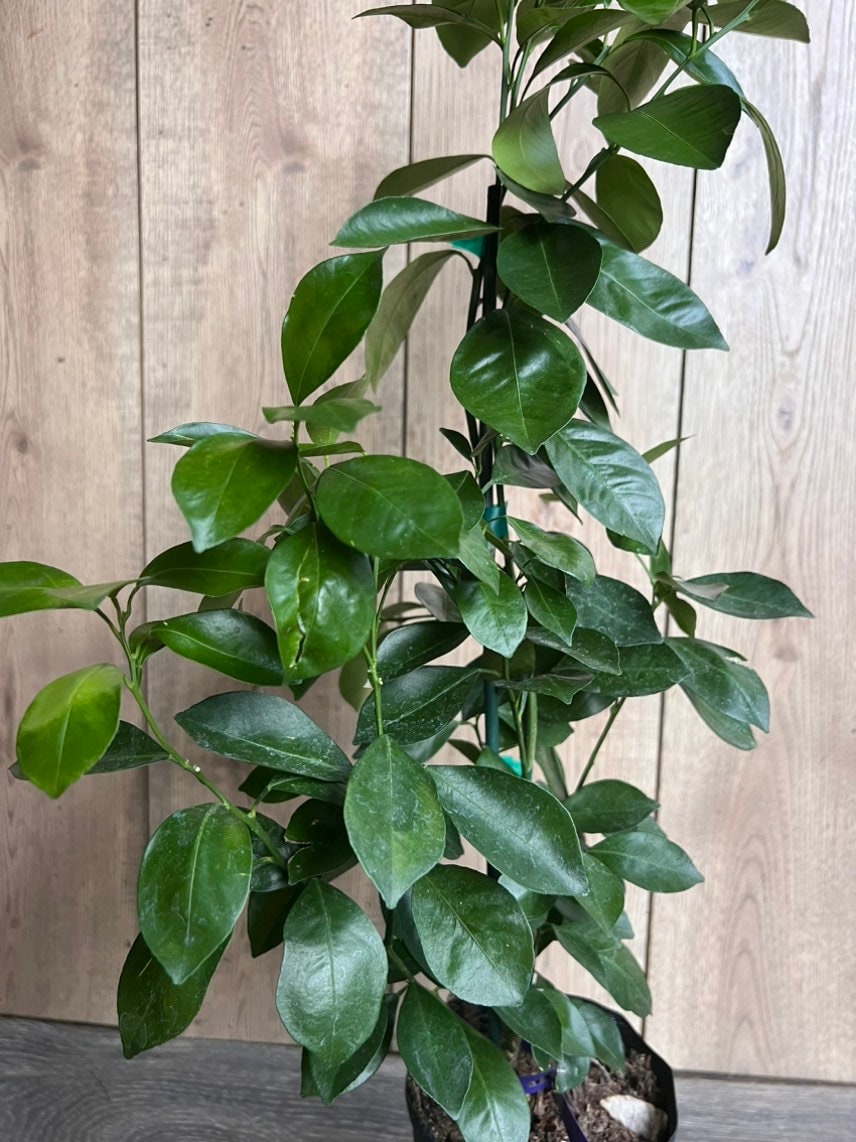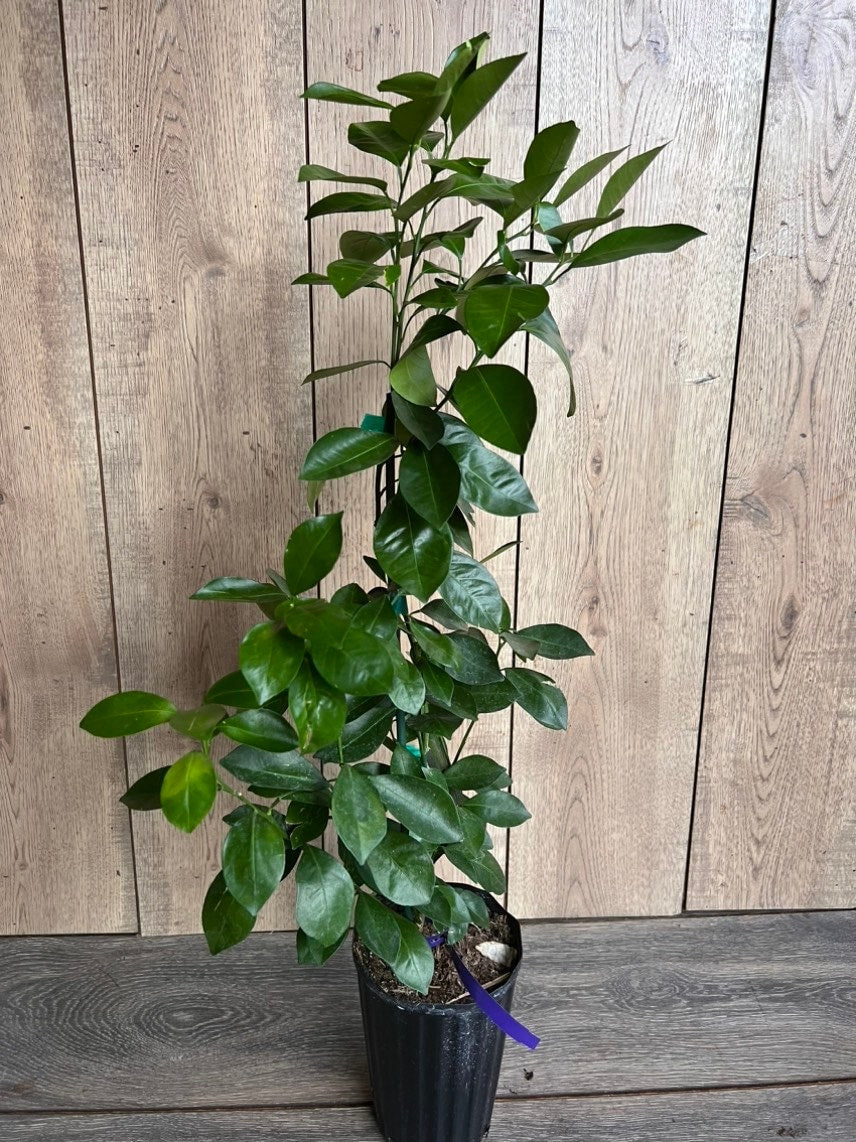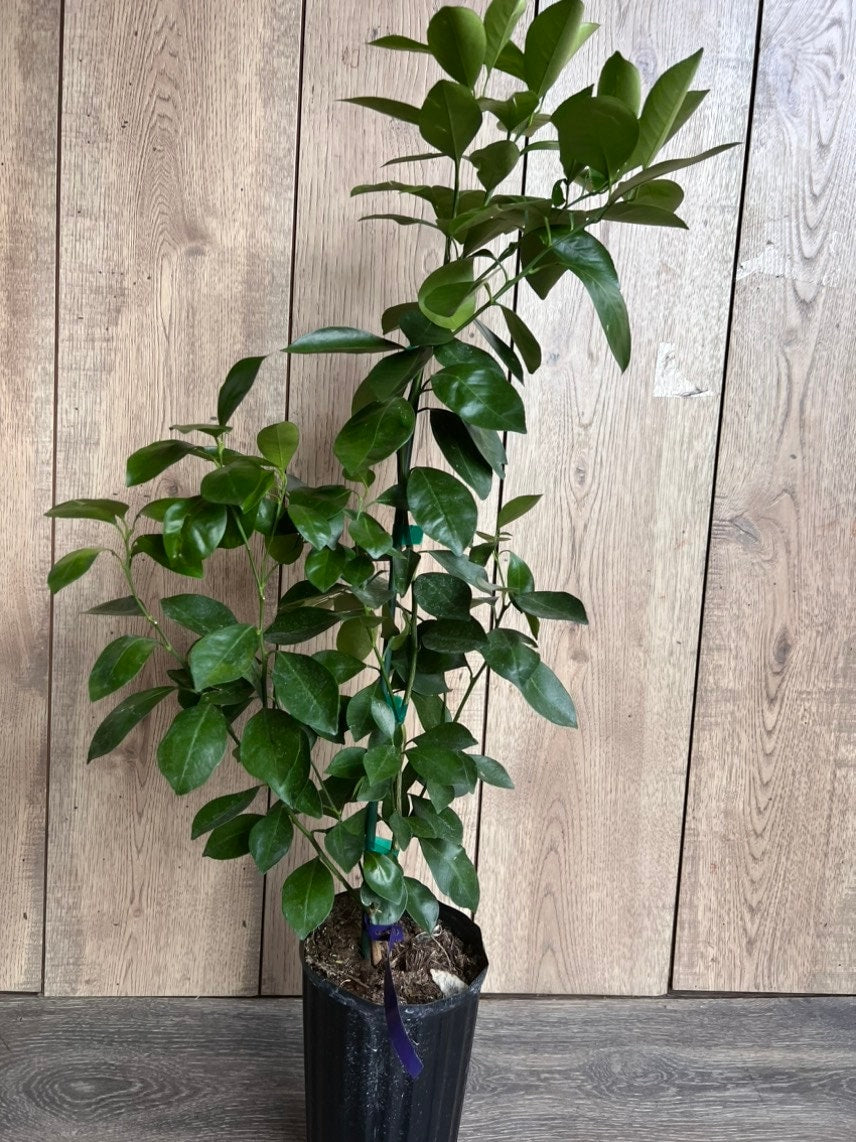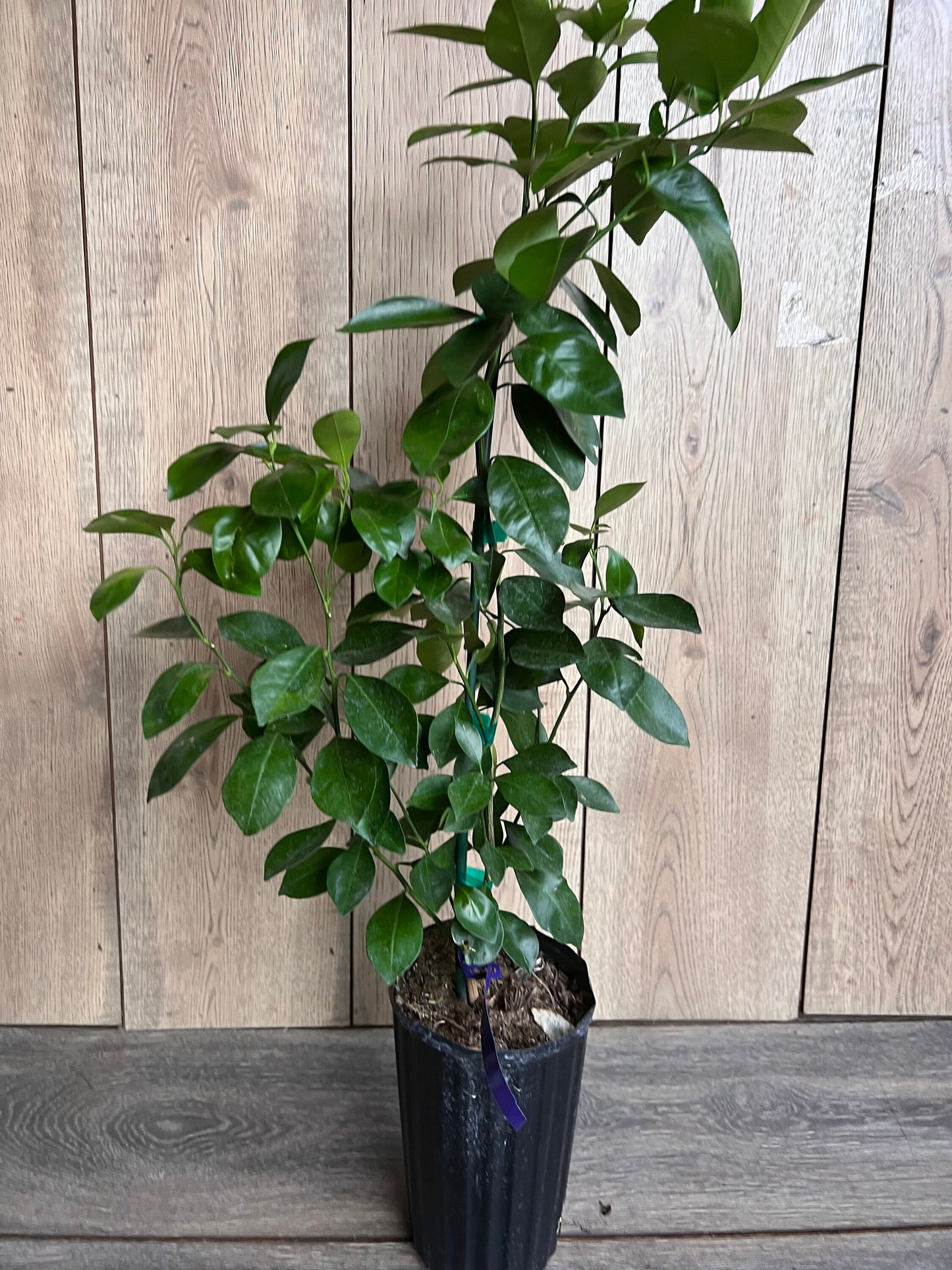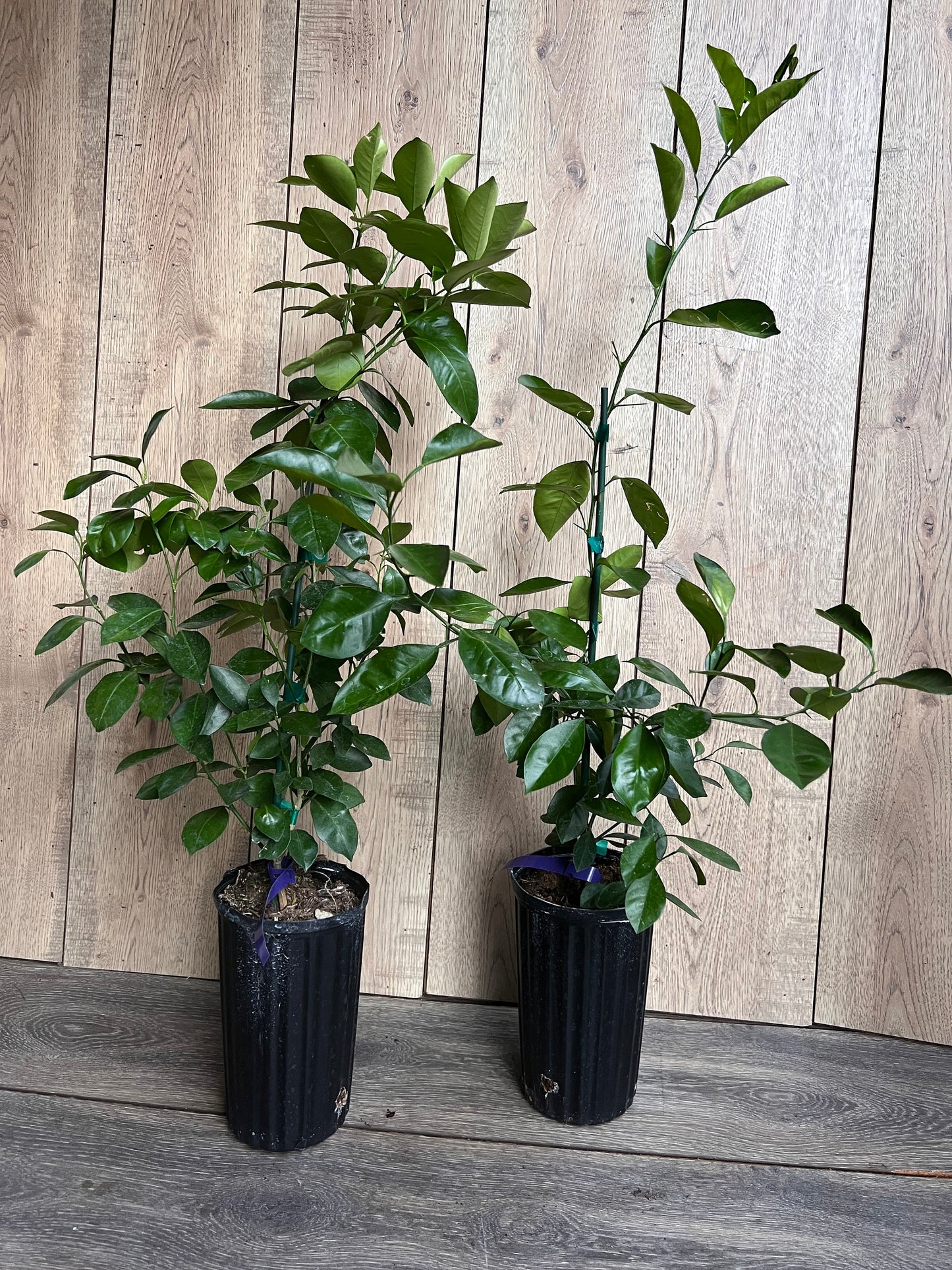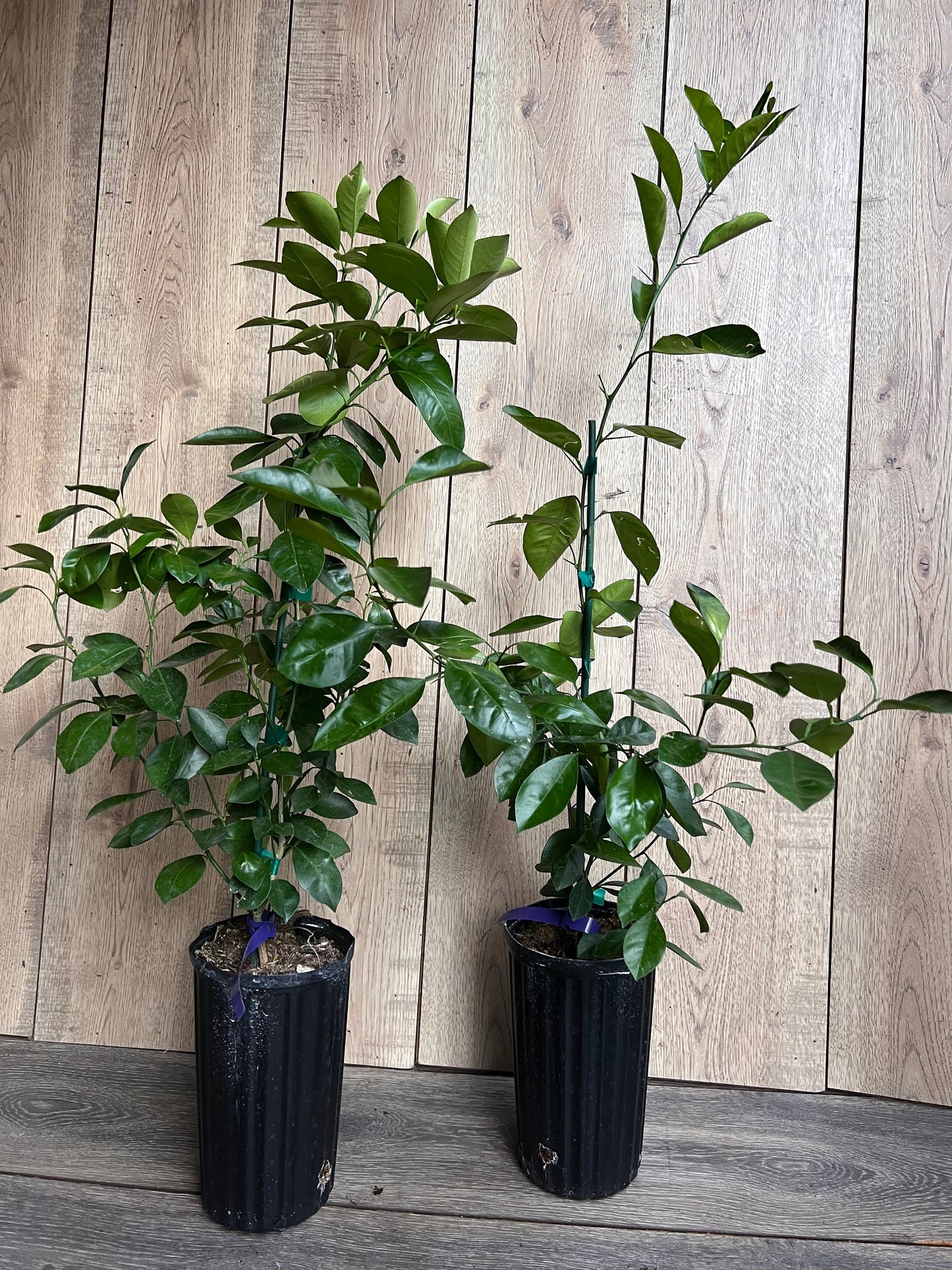1
/
of
8
Calamondin , Calamansi , Grafted tree in Half Gallon Pot Tac chua, Florida Shipping Only
Calamondin , Calamansi , Grafted tree in Half Gallon Pot Tac chua, Florida Shipping Only
Regular price
$48.70 USD
Regular price
$64.94 USD
Sale price
$48.70 USD
Unit price
/
per
Shipping calculated at checkout.
Couldn't load pickup availability
You will receive one Calamondin tree in a 1/2-Gal pot, similar to the pictures.
The Calamondin (also known as Philippine lime) is a small, tangy citrus tree that’s a hybrid between a kumquat and a mandarin orange. Known for its sour fruit, it’s popular in Southeast Asian cooking and beverages. Calamondin trees are compact, making them ideal for both indoor and outdoor growing, especially for gardeners with limited space.
Light Requirements
- Full Sun: Needs 6-8 hours of direct sunlight daily.
- Outdoor Growing: Plant in a sunny spot, preferably south or west-facing.
- Indoor Growing: Place near a bright window with direct sunlight, or use grow lights if natural light is insufficient.
Watering
- Moderate Watering: Water when the top 1-2 inches of soil feel dry.
- Watering Frequency: Water more frequently in spring and summer; reduce in winter.
- Drainage: Ensure good drainage to prevent root rot. Avoid letting the pot sit in excess water.
Temperature
- Warm Temperatures: Ideal range is 65°F to 85°F (18°C to 29°C).
- Cold Sensitivity: Protect from temperatures below 32°F (0°C). If growing indoors, keep it in a warm room (65°F to 75°F or 18°C to 24°C).
Soil
- Well-Draining Soil: Use citrus-specific or slightly acidic potting mix (pH 5.5-6.5).
- Container Soil: Use a light, airy mix with added perlite or sand for better drainage.
Fertilizing
- Regular Fertilizing: Use balanced, slow-release fertilizer (e.g., 10-10-10 or 20-20-20) during the growing season.
- Fertilizer Frequency: Feed every 4-6 weeks in spring and summer, and reduce to 6-8 weeks in fall/winter.
- Micronutrients: Ensure fertilizer includes iron, magnesium, and zinc for optimal health.
Pruning and Maintenance
- Pruning: Prune after fruiting (late winter or early spring) to remove dead wood and shape the tree. Thin excess branches for better air circulation.
- Leaf Cleaning: Wipe leaves with a damp cloth to remove dust and improve sunlight absorption.
Pollination
- Self-Pollinating: No need for another tree, though pollination by bees can improve fruit yield.
- Indoor Pollination: Hand-pollinate using a small paintbrush to transfer pollen between flowers.
Pests and Problems
- Common Pests: Watch for aphids, mealybugs, scale insects, and spider mites. Use insecticidal soap or neem oil for treatment.
-
Citrus Issues:
- Leaf Curling/Yellowing: Caused by overwatering, underwatering, or nutrient deficiencies.
- Fruit Drop: May occur due to inconsistent watering, lack of light, or pests.
Fruit Development and Harvesting
- Fruiting: Calamondins typically bear fruit 2-3 years after planting (grafted trees), or 3-4 years from seed.
- Harvesting: Fruit ripens to bright orange and becomes slightly soft. Harvest when ripe for the best sour flavor.
- Uses: Fruit is highly acidic, perfect for cooking, garnishing, or in drinks. The zest is aromatic and tangy.
Container Growing
- Pot Size: Choose a container with drainage holes, at least 12-14 inches in diameter.
- Repotting: Repot every 2-3 years to refresh the soil and accommodate growth.
Toxicity
- Non-Toxic to Pets: Calamondin trees are safe for cats and dogs, but the fruit may cause mild stomach upset if ingested.
Share

